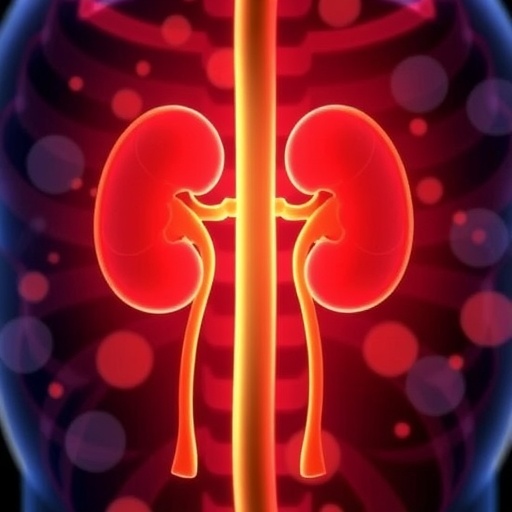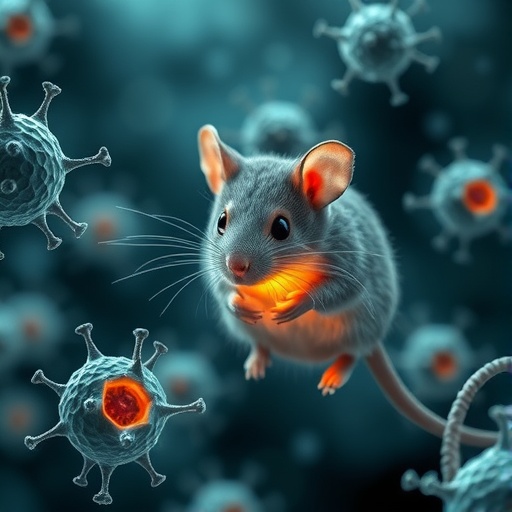
In the vast wilderness of Yellowstone National Park, the resurgence of large, free-roaming bison herds is offering groundbreaking insights into the ecological roles these animals once played across North Americaâs sprawling grasslands. A new study, recently published in Science, sheds light on how the restoration of bison migrations profoundly influences nutrient cycling and ecosystem health on an unprecedented landscape scale. This research not only challenges longstanding grazing assumptions but also underscores the immense capacity of migratory megafauna to reshape ecosystems when allowed to thrive unimpeded.
Historically, tens of millions of bison roamed freely across the North American continent, migrating seasonally and transforming grassland ecosystems through their varied interactions with plants, soils, and microbial communities. These large herds were key architects of landscape heterogeneity, stimulating nutrient dynamics and driving productivity in a vast ecological network. However, todayâs bison population is a mere shadow of its former self, comprising approximately 400,000 individuals, most confined within fenced preserves, managed herds, and fragmented habitats. This limitation has significantly obscured the broader ecological functions once provided by freely migrating herds.
The study, led by ecologist Chris Geremia and his team, utilized the northern Yellowstone ecosystem as a living laboratory to observe bison behavior and its cascading effects across diverse habitats. Over seven years, from 2015 to 2022, the researchers meticulously tracked bison grazing patterns across sixteen sites that represent the speciesâ primary habitat types. This extensive data collection allowed an unprecedented evaluation of bison impacts on carbon and nitrogen cycles, vegetation structure, and soil microbial communities, illuminating the multifaceted ways these herbivores influence ecosystem services.
One of the key revelations from this research is the intricate balance bison maintain in regulating plant productivity while simultaneously accelerating nitrogen cycling. Unlike traditional grazing paradigms that often view intense herbivory as detrimental, the study found that zones with high bison densitiesâespecially in moist, nutrient-rich patchesâexhibited stabilized aboveground biomass. More strikingly, nitrogen availability and turnover rates increased in these grazed areas, signaling enhanced nutrient fluxes that support vigorous plant growth and ecosystem resilience.
This nitrogen enrichment is strongly linked to the increased activity and density of soil microbes observed under bison grazing regimes. Soil microbiomes play essential roles in nutrient breakdown and recycling, facilitating the transformation of organic matter into bioavailable forms. By boosting microbial populations, bison indirectly amplify nutrient supply to plants, creating feedback loops that sustain higher ecosystem productivity. Furthermore, this dynamic contrasts with systems where grazing pressure is limited or entirely excluded, often leading to nutrient stagnation and decreased habitat heterogeneity.
The study importantly posits that the ecological power of bison extends beyond their sheer biomass, emphasizing the critical role of herd size, density, and migratory freedom in shaping landscape processes. Large, mobile herds that can traverse expansive territories engender spatially complex grazing patterns that enhance habitat diversity and nutrient distribution. These migratory behaviors replicate natural disturbance regimes that have been lost due to human land-use practices, highlighting the necessity to rethink conservation strategies in terms of scale and connectivity rather than isolated refugia.
Geremia and colleagues argue that effective conservation and restoration efforts for migratory herbivores must embrace landscape-scale heterogeneity rather than fragmented management limited to individual pastures or reserves. The findings call for the reestablishment of large migration corridors and the removal of barriers that restrict animal movement, facilitating ecological functions that can only manifest when herbivores roam freely. This rewilding approach holds promise for reinvigorating grassland ecosystems under increasing pressures from climate change and anthropogenic fragmentation.
The implications of this research extend beyond Yellowstone and bison alone. Migratory herbivores worldwide, from wildebeests on the African savannas to caribou in Arctic tundra, fulfill similar ecological functions by modulating nutrient cycles and sustaining vegetation patterns on large spatial scales. Thus, the insights gained from Yellowstoneâs bison offer a model for global grassland conservation and ecosystem management, spotlighting the significance of restoring natural animal movements to maintain biodiversity and ecosystem services.
Moreover, the studyâs holistic approach that integrates animal behavior, plant ecology, soil microbiology, and biogeochemical cycles highlights the interconnectedness of ecosystem components. By bridging these disciplines, it provides a technically robust framework for predicting how large herbivore populations may respond to and influence changing environmental conditions. This integrative perspective is crucial for developing adaptive management strategies that optimize both wildlife conservation and ecosystem health.
Another notable aspect is how the research confronts and overturns conventional wisdom regarding grazing intensity. Traditional management often prescribes maximum allowable grazing densities to prevent degradation, yet the Yellowstone study illustrates that higher densitiesâin the context of unfettered movementâcan actually lead to enhanced ecosystem function. This finding challenges managers to rethink assumptions about carrying capacities and the ecological roles of herbivore populations in natural settings.
The potential for such large-scale grazing dynamics to contribute to carbon sequestration is another avenue suggested by the increased plant and microbial activity documented. Enhanced nutrient cycling and biomass production may promote greater carbon storage above and below ground, which is a critical consideration in the context of global climate mitigation efforts. The role of bison and other large herbivores in modulating carbon fluxes deserves further investigation as part of integrated climate and biodiversity strategies.
Importantly, this research comes at a time when ecological restoration and conservation biology increasingly recognize the value of large mammals as ecosystem engineers. The Yellowstone bison study strengthens the argument that restoring ecological processes at meaningful scales hinges on reinstating the natural roles of such keystone species. Beyond aesthetic and cultural values, their functional contributions underpin the stability and productivity of ecosystems that support countless other species, including humans.
In essence, the reestablishment of migratory bison herds in Yellowstone serves as a vivid glimpse into the past ecological dynamics that sustained North Americaâs grasslands for millennia. It highlights the transformative potential of these iconic animals when released from the confines of modern management and allowed to move freely across landscapes. As conservationists and policymakers grapple with mounting environmental challenges, the lessons from Yellowstone offer an inspiring blueprint for restoring the vitality and complexity of grassland ecosystems worldwide.
Subject of Research: Ecological impacts of large, free-ranging migratory bison herds on nutrient cycling, plant communities, and soil microbiology in the northern Yellowstone ecosystem.
Article Title: Yellowstoneâs free moving large bison herds provide a glimpse of their past ecosystem function
News Publication Date: 28-Aug-2025
Web References:
http://dx.doi.org/10.1126/science.adu0703
References:
Geremia, C. et al., âYellowstoneâs free moving large bison herds provide a glimpse of their past ecosystem function,â Science, 28 August 2025.
Keywords: Yellowstone, bison, nutrient cycling, nitrogen cycling, grassland ecosystems, migratory herbivores, ecosystem restoration, soil microbiology, plant productivity, conservation biology, large herbivores, landscape ecology
Tags: bison and microbial community interactionsbison impact on grassland ecosystemschallenges of modern bison managementecological research on bison behaviorecological roles of bison migrationecosystem health in Yellowstonefree-roaming bison in Yellowstonehistorical bison populations in North Americaimportance of large herbivores in ecosystemslandscape heterogeneity created by bisonnutrient cycling in grasslandsrestoration of migratory megafauna




